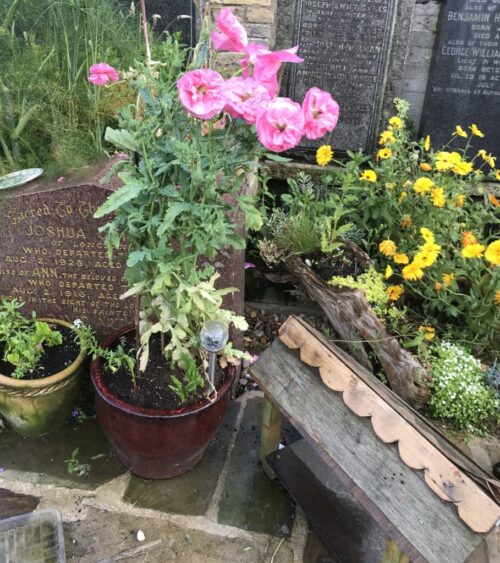When we first acquired this beautiful chapel of ours and we sat down to dream about how it would look – what would go where etc the one aspect that daunted us more than most was the ceiling of the chapel itself. The ceiling comprised of three beautiful and elaborate Georgian plasterwork roses, a decorated plaster border around the entire edge (corners of which were damaged with damp and dry rot), and … a sea of yellow polystyrene tiles. The tiles must have been put up in the sixties/seventies to help with insulation but were stuck fast – who ever did it did a really good job! Like with any tricky task once you get started you can begin to get a plan together – so a month or so ago the scaffolding went up and our team began to chip away at the tiles – releasing flakes of polystyrene like falling snow onto every corner of the downstairs space. We owe a huge debt of gratitude to our loyal volunteer Judy who spent two days sweeping and bagging up the polystyrene – 34 bags in all!
The damaged plasterwork around the borders has been re-made by heritage plaster experts – and looks as good as new, but in taking down the stubborn polystyrene a few of the ceiling rose coronets were also damaged. This called for the old “playdough and plaster of Paris” schoolgirl trick – and so we made a mould by pushing the playdough into an undamaged section and pouring some plaster of Paris (saved from an old Shabang arts project) into the mould – after a bit of trial and error this miraculously worked and we managed to replicate the coronet and stick it back in place. Even the keenest eye would struggle to see the repair.
Forced to lose any fear of heights we may have been harbouring, we’ve now braved the scaffolding and completely repaired the first ceiling rose – repainted in original colours – and it looks beautiful. The rest of our team have been boarding, skimming and painting.
A world shortage of plaster – due to lockdown manufacturing closures was our next challenge and we’ve ended up paying … gulp gulp … £23 a bag (normally costing £7) – for anyone who knows Russell you will appreciate how much this really hurt him. A necessary move however, if we are to complete the job. So, we’ve put together a short compilation of pictures to illustrate our ceiling’s journey. One fascinating fact we’ve learnt along the way – if you look at the elaborate ceiling rose plasterwork you will see the filigree effect. The spaces in the filigree allowed condensation from the congregation to escape into the cavity above the ceiling and out through ventilation windows in the roofline – clever eh?
As a footnote we wanted to share a picture of the beautiful poppies now flowering in our garden – grown from seeds from our good friend Brenda’s Devon garden – a lovely way to remember her – we miss you Brenda xxx

